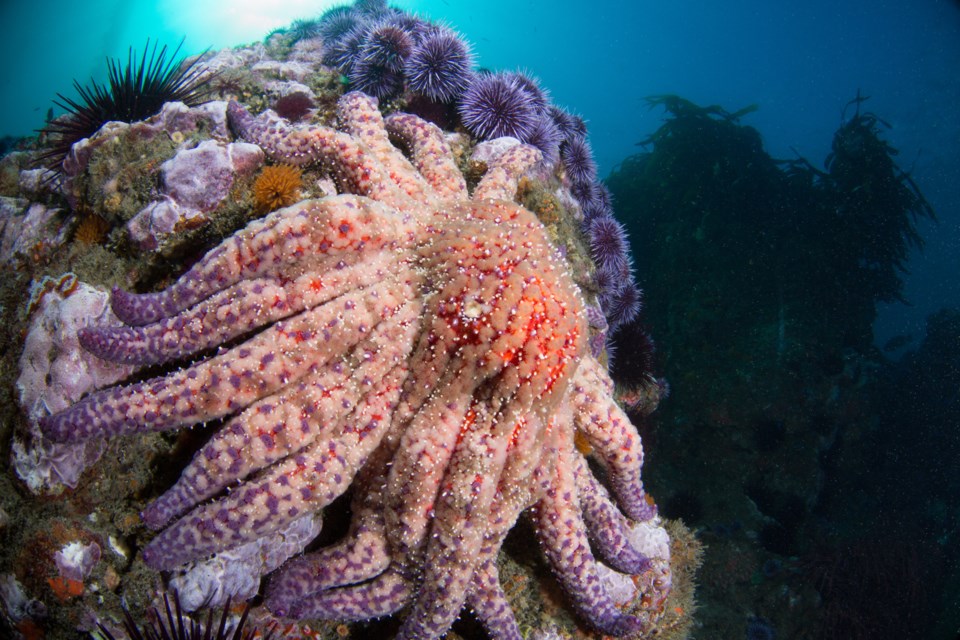The loss of a sea star population has led to destructive impacts which are affecting Howe Sound.
According to a new report from Ocean Wise, the sunflower sea star population diminished by nearly 90% in British Columbian waters because of sea star wasting disease (SSWD). This decline led to a quadrupled green sea urchin population in Howe Sound, which demolished too many kelp forests.
“Kelp forests are important breeding grounds and nurseries for many fish and invertebrate species, such as rockfish, herring, crabs and prawns, as well as sea otters,” reads the news release from Ocean Wise. “They also play a role in countering the impacts of climate change by sequestering carbon and acting as an ocean acidification buffer.”
According to the report, in 2013, the disease hit the sunflower sea star and in some cases diminished populations by 99 to 100%. Warming ocean temperatures due to climate change were a key factor in the severity of the disease.
“Climate change plays a role in exacerbating the impacts of marine diseases and is impacting marine biodiversity and taking away from essential ecosystem services provided by the ocean,” reads the report.Currently, the sunflower sea star is not listed for protection in Canada. However, experts are currently working on better ways to protect and restore the sunflower sea star.
“Once completed, this research will be submitted to the Committee on the Status of Endangered Wildlife in Canada (COSEWIC) and the Species at Risk Act (SARA) in the hopes that sunflower seas stars will see greater protection,” reads the news release.
Furthermore, the release said Ocean Wise will take steps to conserve kelp forests by harvesting urchins as well as planting new kelp fronds.“By harvesting green sea urchins from areas previously well-populated by sunflower sea stars the expectation is that newly planted kelp fronds might flourish.”
The report encouraged individuals, governments and organizations to make attempts to lower their carbon footprint, support research about the disease and bolster conservation efforts for the sunflower sea star and kelp forests.
“While we rely on the many dedicated researchers to learn more to save this species, we can all still play a part in lessening our environmental impact and helping to reduce climate change.”



